Lost to fire, Ford’s Rotunda drew more visitors than the Statue of Liberty
Ford called it the “Show Place of the Automotive Industry,” and even a title that brazen may have understated the widespread appeal of the Rotunda. By the early 1960s, Ford’s futuristic Rotunda was not only the most popular automotive-related tourist destination in the United States, it was the fifth-most visited attraction overall, seen by more people than the Statue of Liberty, the Washington Monument, and Yellowstone National Park.
Never heard of the Ford Rotunda? You’re forgiven. It’s been six decades since the building was lost forever on November 9, 1962.
On that pleasant Michigan afternoon, workers were applied waterproofing sealant to the roof when a heater ignited the fumes. The beloved structure was consumed in a flash of flames. Less than an hour later, it was destroyed. While the Ford Rotunda is now relegated to photos and faded memories, those who remember it do so fondly, not just for its endless automotive displays and history lessons, but for its massive Christmas makeover each year.
“Over the years, the Rotunda acquired a special personality all its own,” Detroit Free Press columnist Mark Beltaire wrote in 1962. “It was known and recognized by people who had never been inside. They were aware of the Rotunda, especially at night, even while driving many miles away.”
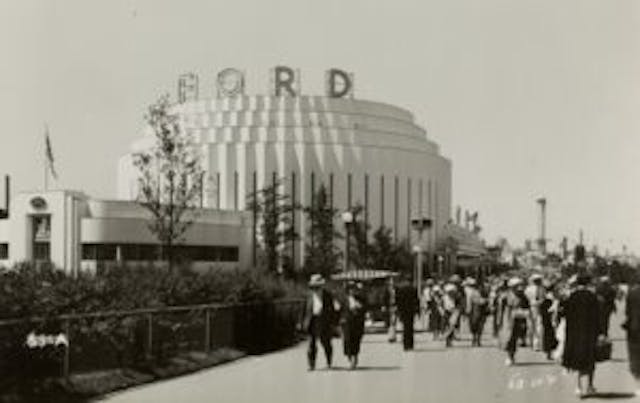
Built by legendary Detroit architect Albert Kahn as the centerpiece of Ford’s exhibit in the 1933–34 Century of Progress International Exposition in Chicago, the Rotunda stood 10 stories tall and resembled gears stacked atop one another. Kahn had already designed a number of iconic Motor City buildings, including the Packard plant and Ford’s River Rouge plant, but this one was unlike any he had ever created. World’s Fair attendees flocked to it.
Henry Ford so loved the Rotunda that at the end of the fair, he wanted to add it to his collection of historic buildings at Greenfield Village, just a short drive from the Rouge, and use it to display historical advancements in industrial engineering. However, Edsel Ford convinced his father that it would be better used as a visitor center and starting point for the company’s popular Rouge plant tours. So, the huge structure was disassembled and shipped to Dearborn, where it was reassembled in 18 months—with slight design changes made by Kahn—on a 13.5-acre site across from the Ford Administration Building on Schaefer Road.
The building’s 1000-ton steel frame was covered in 114,000 square feet of Indiana limestone, and its expansive interior featured murals showing the River Rouge assembly line. Ford’s newest cars were on display. Outside, the Rotunda also featured the original “Roads of the World” exhibition from the World’s Fair. (Later, two wings were added, one for the Ford Motor Company Archives and the other for a theater. In 1952, an 18,000-pound dome was added over the courtyard; it was the first real-world application of inventor R. Buckminster Fuller’s lightweight geodesic dome.)
On May 14, 1936, the relocated Rotunda opened its doors to the public. It was an immediate hit, just as it had been at the World’s Fair. Ford says the Rotunda welcomed more than 61,000 visitors the first week and that during the 26 years that followed—including four during World War II in which the building was shuttered—more than 13 million people visited. (Some sources put that number between 16 and 18 million.)
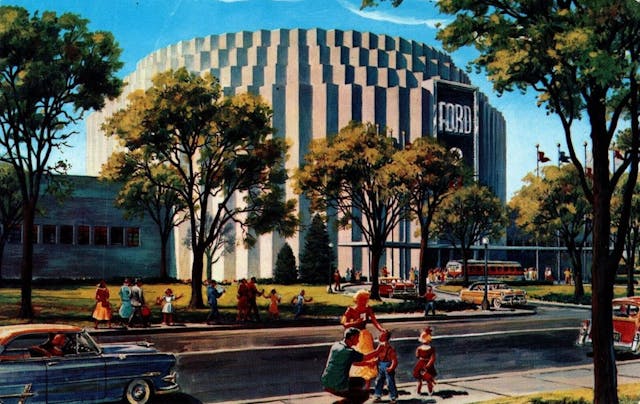
Beginning in late November 1953, following an extensive restoration timed to celebrate the company’s 50th anniversary, Ford hosted its first Christmas Fantasy extravaganza. Growing in size and complexity each year, the annual transformation became the Rotunda’s biggest drawing card, and it’s no wonder.
Its features included a 35-foot-tall tree with thousands of lights, Santa’s workshop with a crew of animatronic elves, a life-size Nativity that the National Council of Churches called the country’s “largest and finest,” and a wall display of more than 2000 dolls that were dressed by members of the Ford Girls’ Club and later given to underprivileged children. The overall theme changed each year—featuring everything from storybook characters to circus animals—but the pinnacle of every Christmas Fantasy was the opportunity to visit Santa Claus himself … after standing in a long line of children and parents, of course.
On the day of the fire, workers were busy erecting the indoor displays in time for the festivities, while workers outside were waterproofing the dome panels in anticipation of winter weather.
Author David Maraniss described the scene in Once in a Great City, his 2015 book about Detroit in the 1960s:
The quintessentially American harmonic convergence of religiosity and commercialism was expected to attract more than three-quarter of a million visitors before the season was out, and for a generation of children it would provide a lifetime memory—walking past the live reindeer Donner and Blitzen, up the long incline toward a merry band of hardworking elves, and finally reaching Santa Claus and his commodious lamp.
An elementary school class had just left the Rotunda when, about 1 p.m., a worker reported flames on the roof. A security guard quickly called the fire department and evacuated the building, but by the time firefighters arrived, the roof was fully ablaze. Soon the steel frame began to buckle, and at 1:56 p.m., firefighters were ordered away from the building as the walls began to crumble.

In Once in a Great City, a witness said the building’s collapse looked “as though you had stacked dominos and pushed them over.” The roof crashed into the Christmas displays below, and flames shot 50 feet into the sky before firefighters could control them.
The Ford Rotunda, which earlier in the day was being prepared for a highly anticipated Christmas celebration, now sat in smoldering ruins. The spirits of thousands of past and future visitors sank.
Ford considered rebuilding the Rotunda, but the price tag was an astounding $15 million, the equivalent of more than $147M today. What remained of the building was razed, along with the theatre, which had also been destroyed. (On the bright side, the Ford Motor Company Archives survived.)
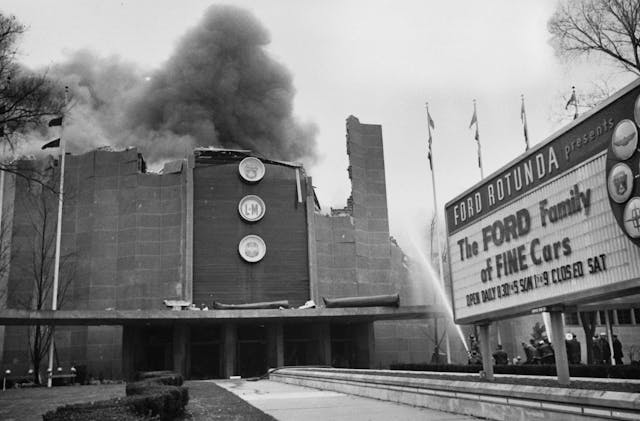
The site sat vacant for nearly 40 years until the Henry Ford College Michigan Technical Education Center (M-TEC) opened there in 2000.
The Rotunda, a uniquely designed building that was once the fifth-most visited tourist attraction in the U.S.—behind only Niagara Falls, Smokey Mountain National Park, the Smithsonian, and the Lincoln Memorial—is now just a footnote in automotive history. But to those who saw it in person, especially at Christmas or illuminated a night, it was much more than that.
“Tears for a building?” Beltaire asked in his Free Press column, written after the fire. “Of course, and many [tears] when such as the Ford Rotunda dies.”
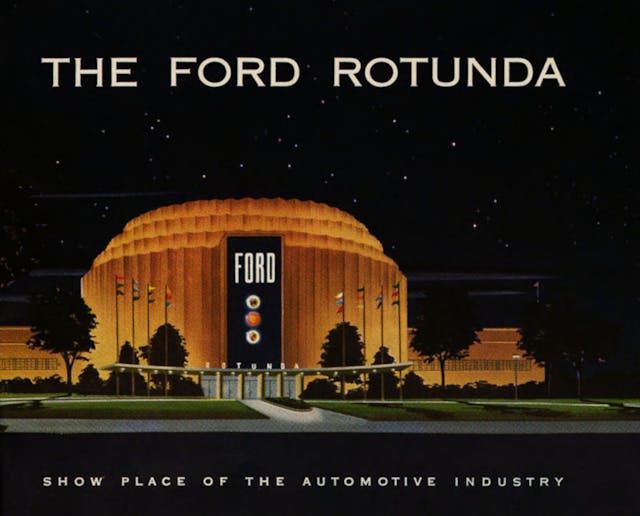

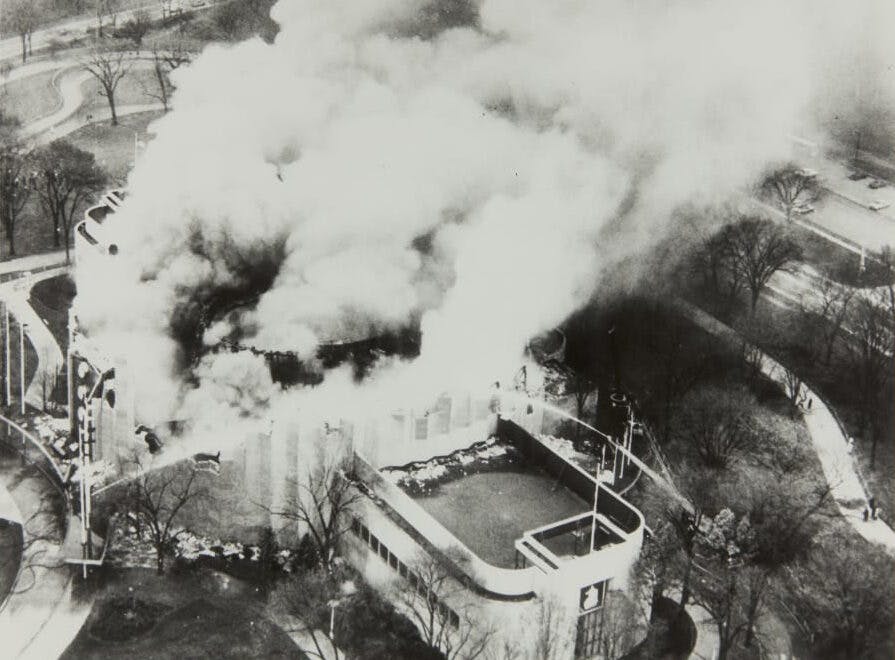
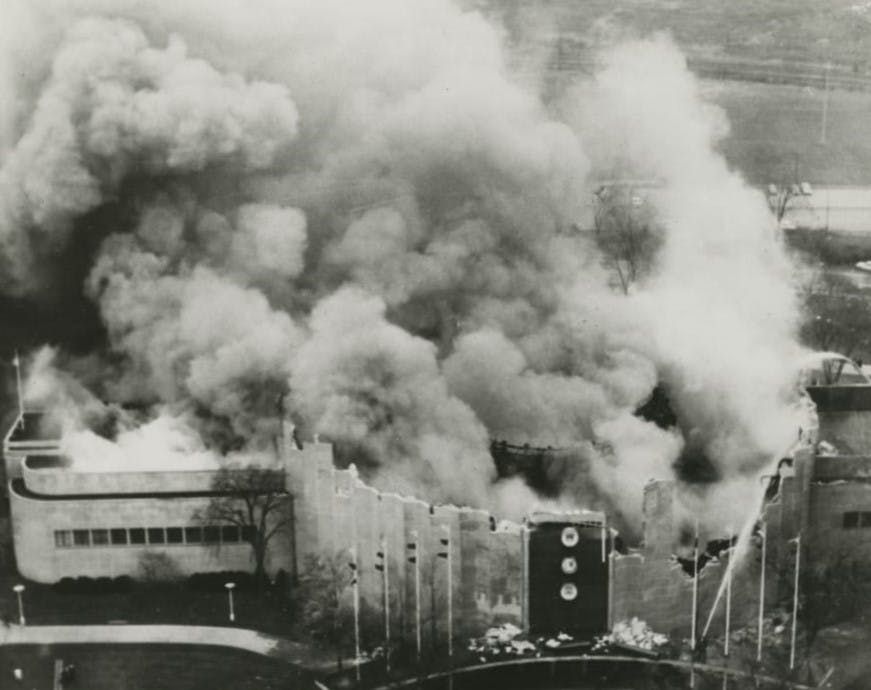
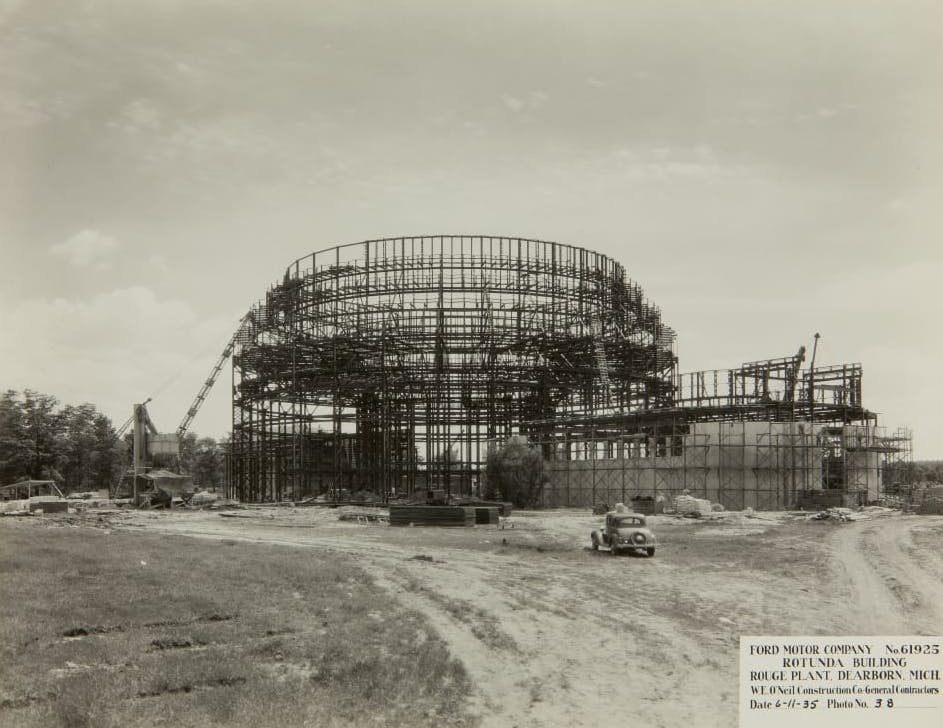
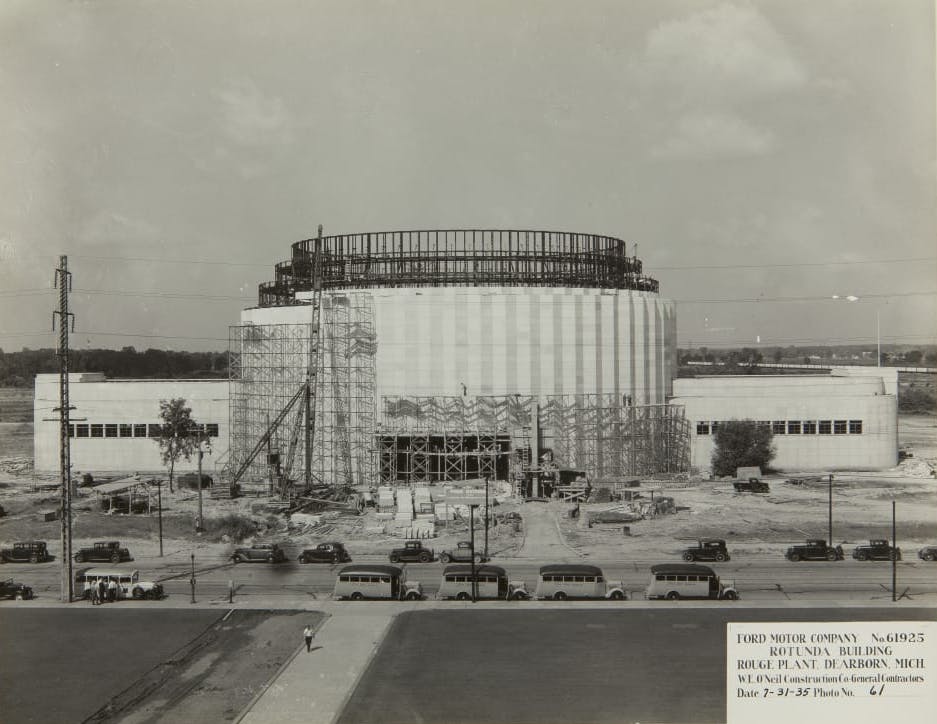
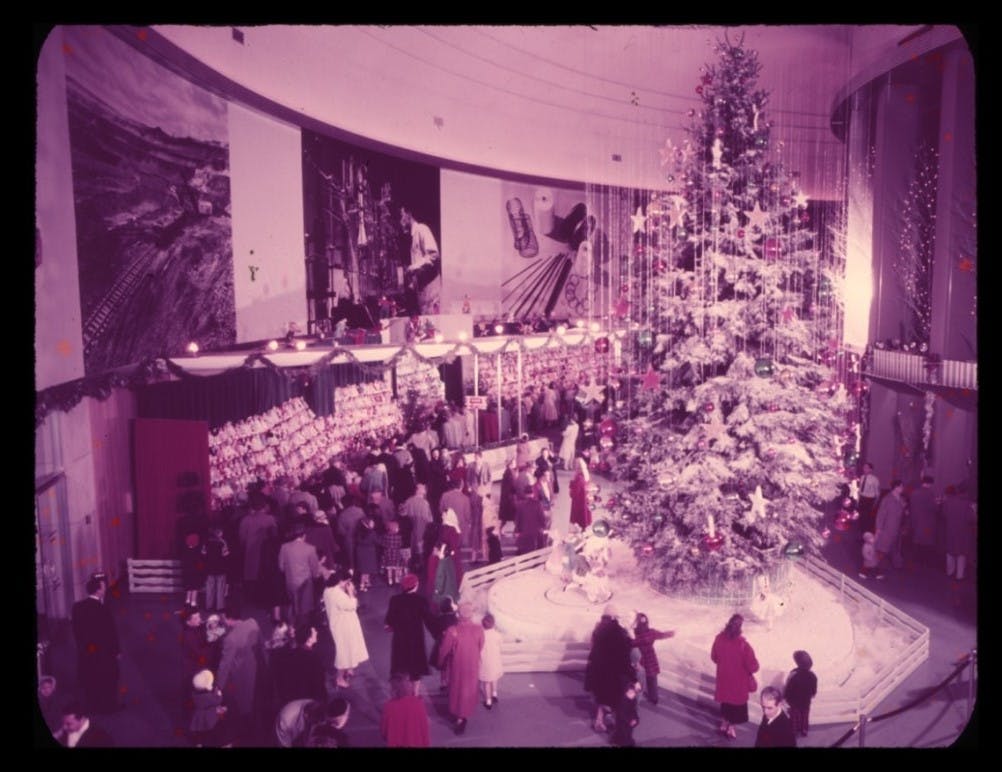

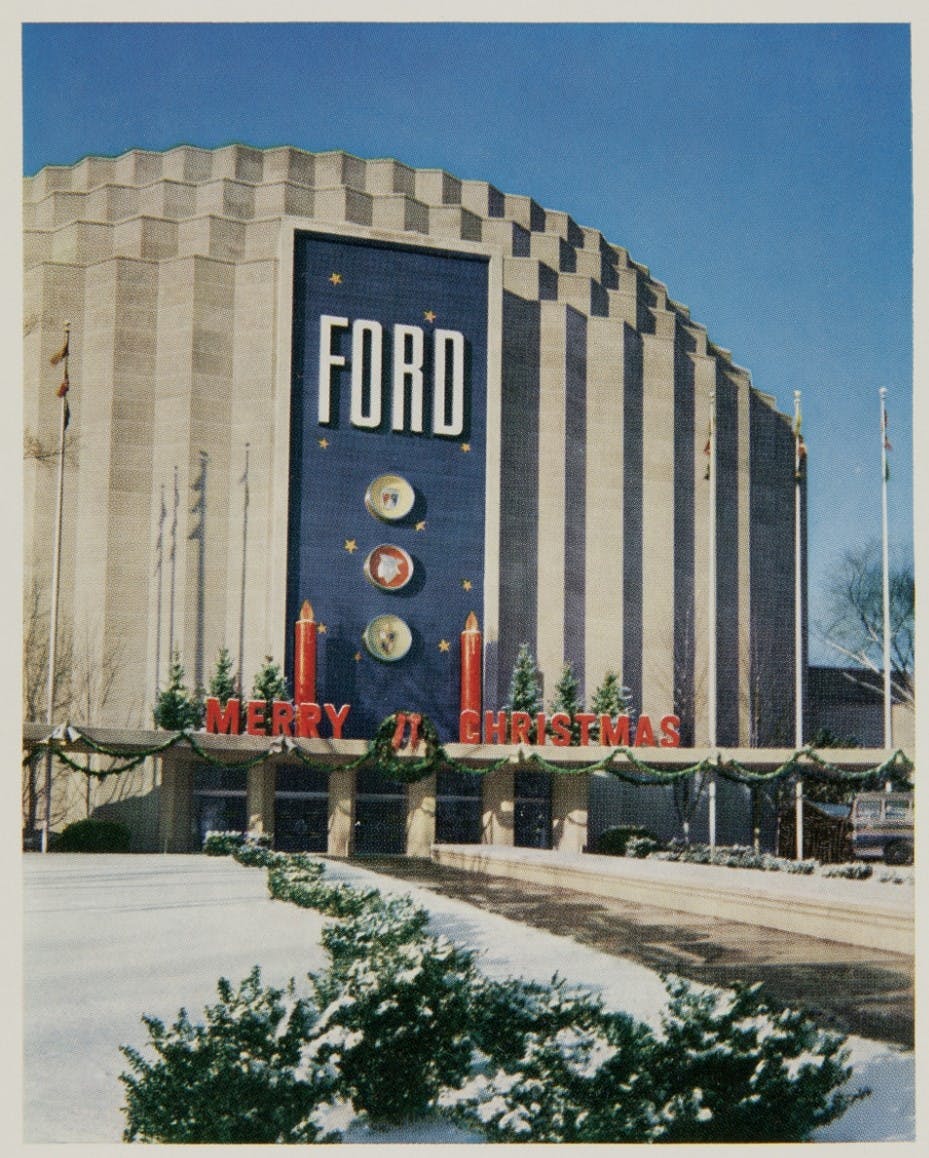
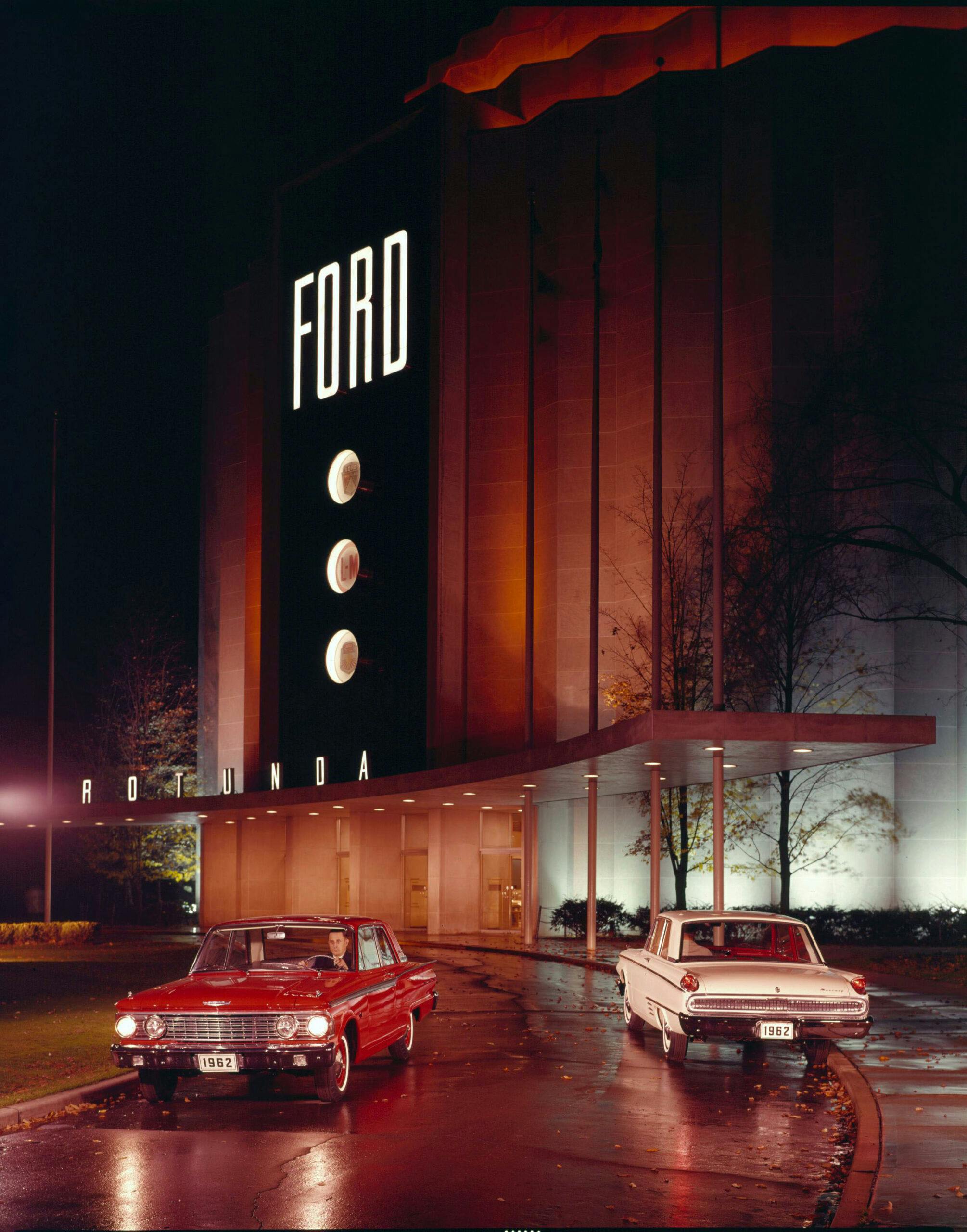
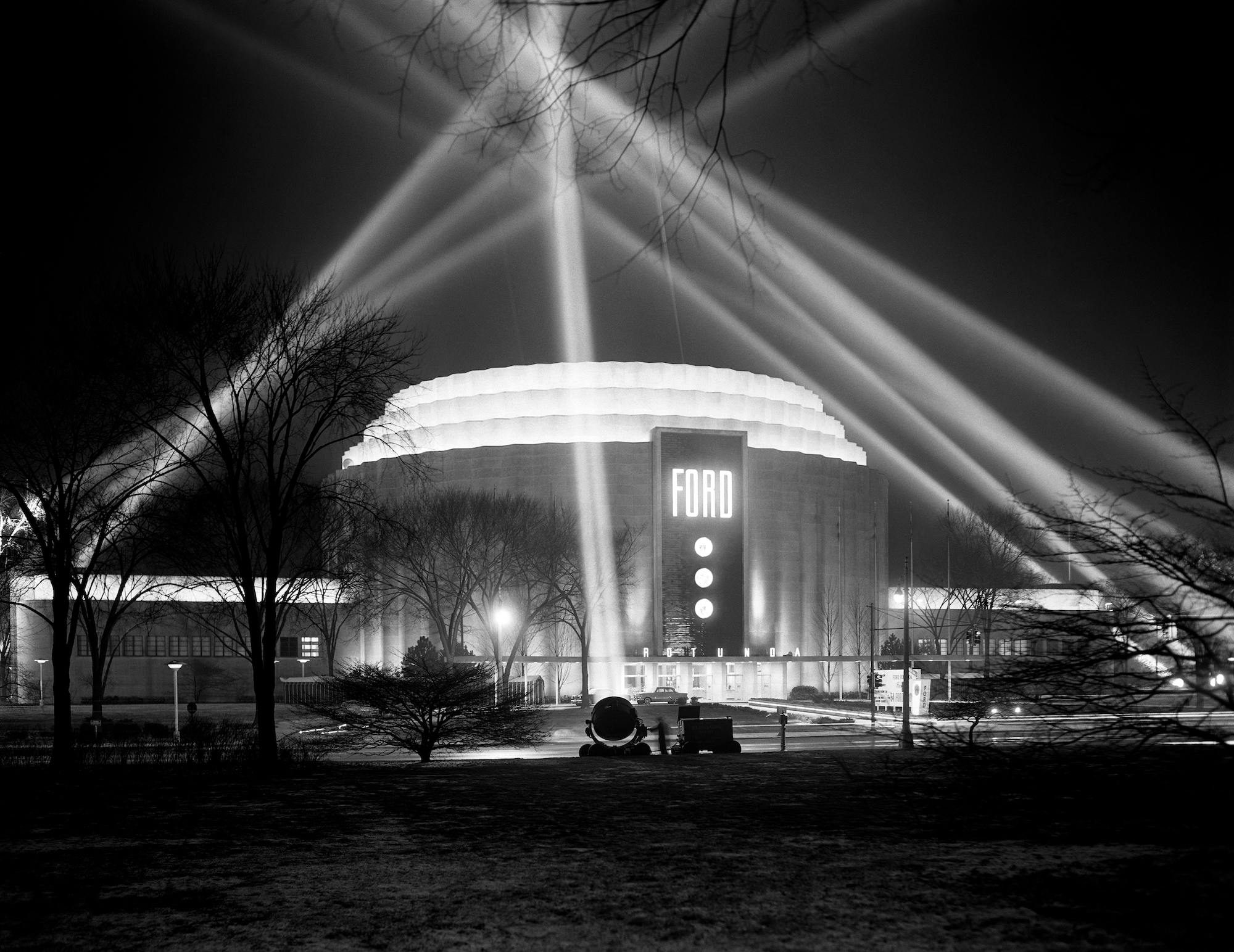
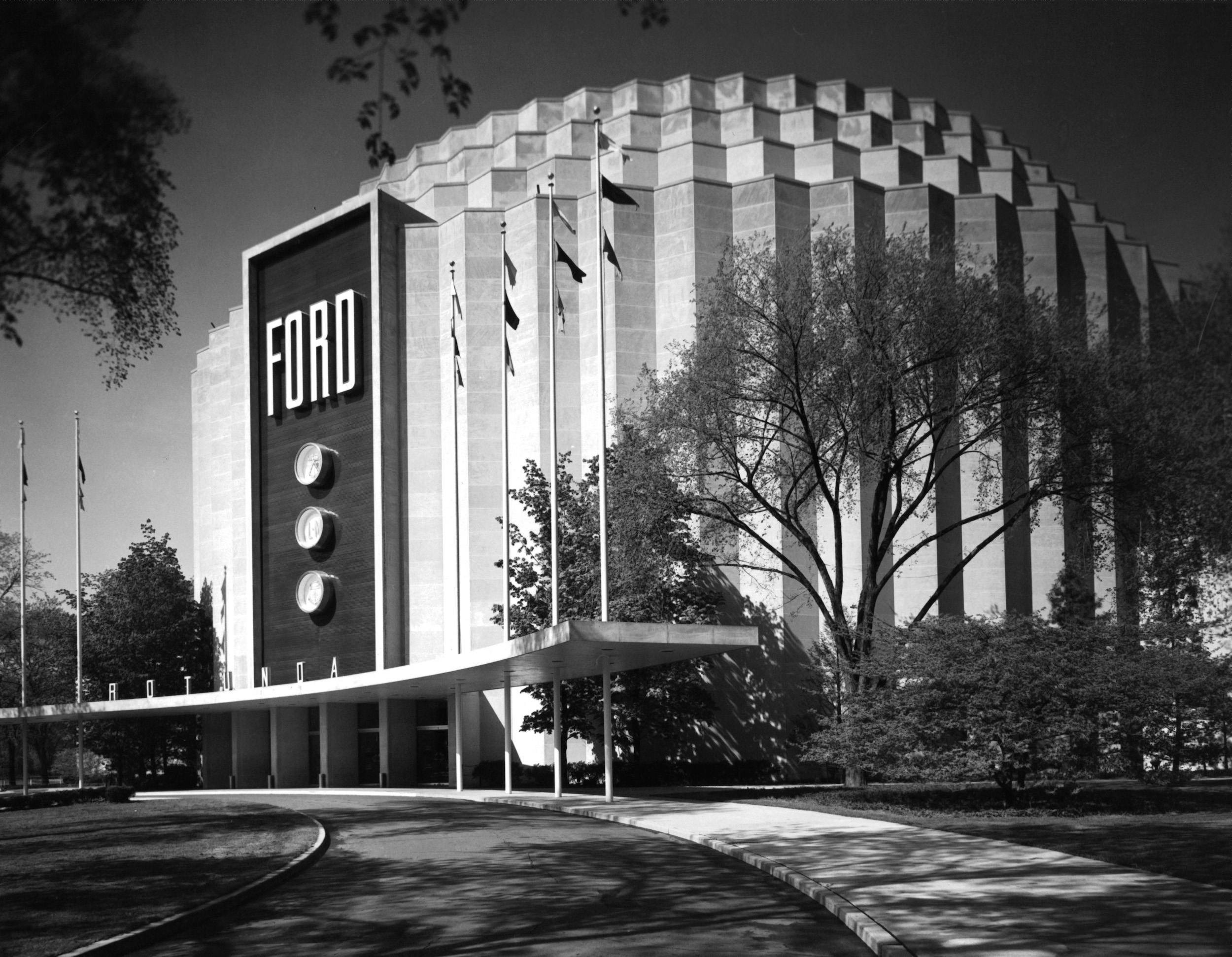
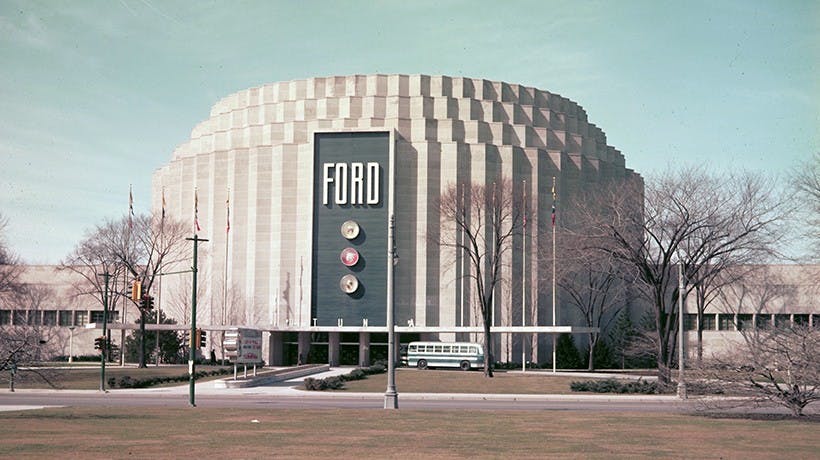
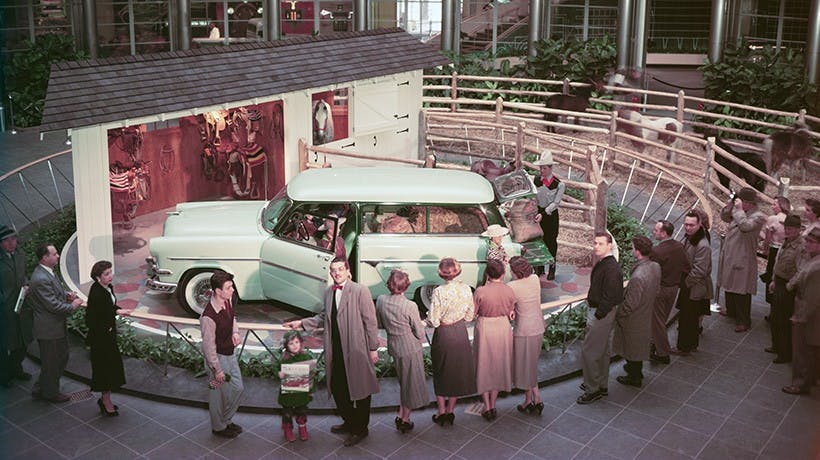
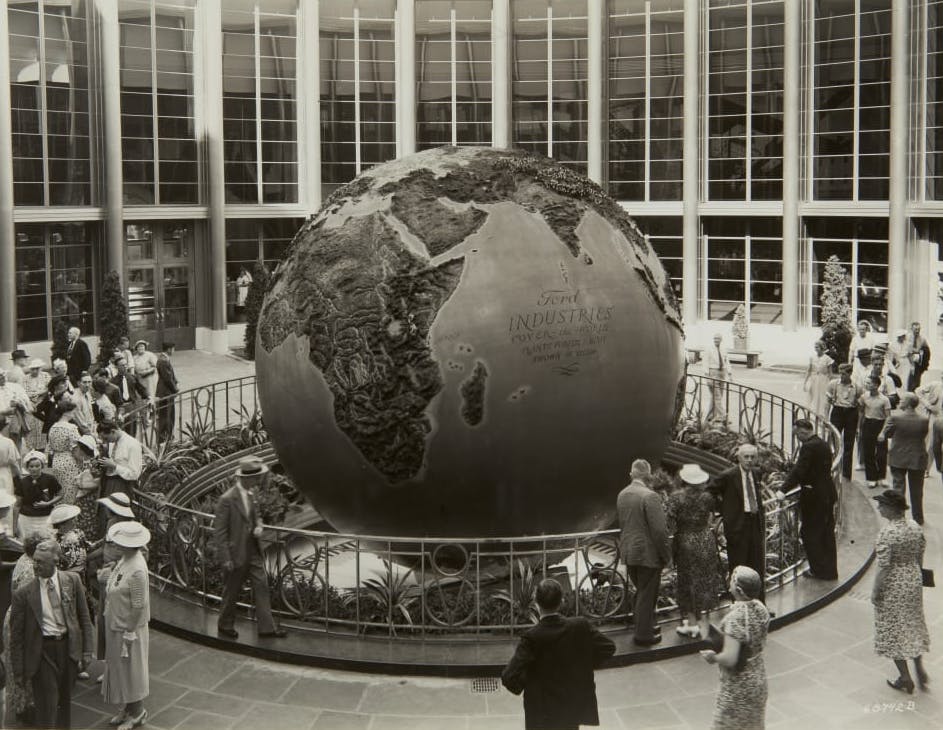
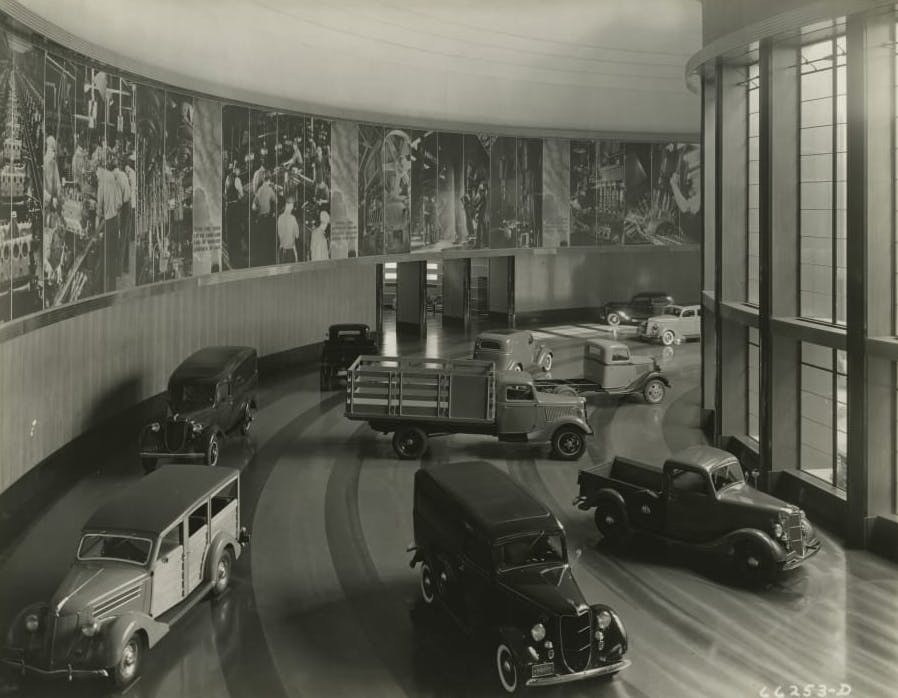
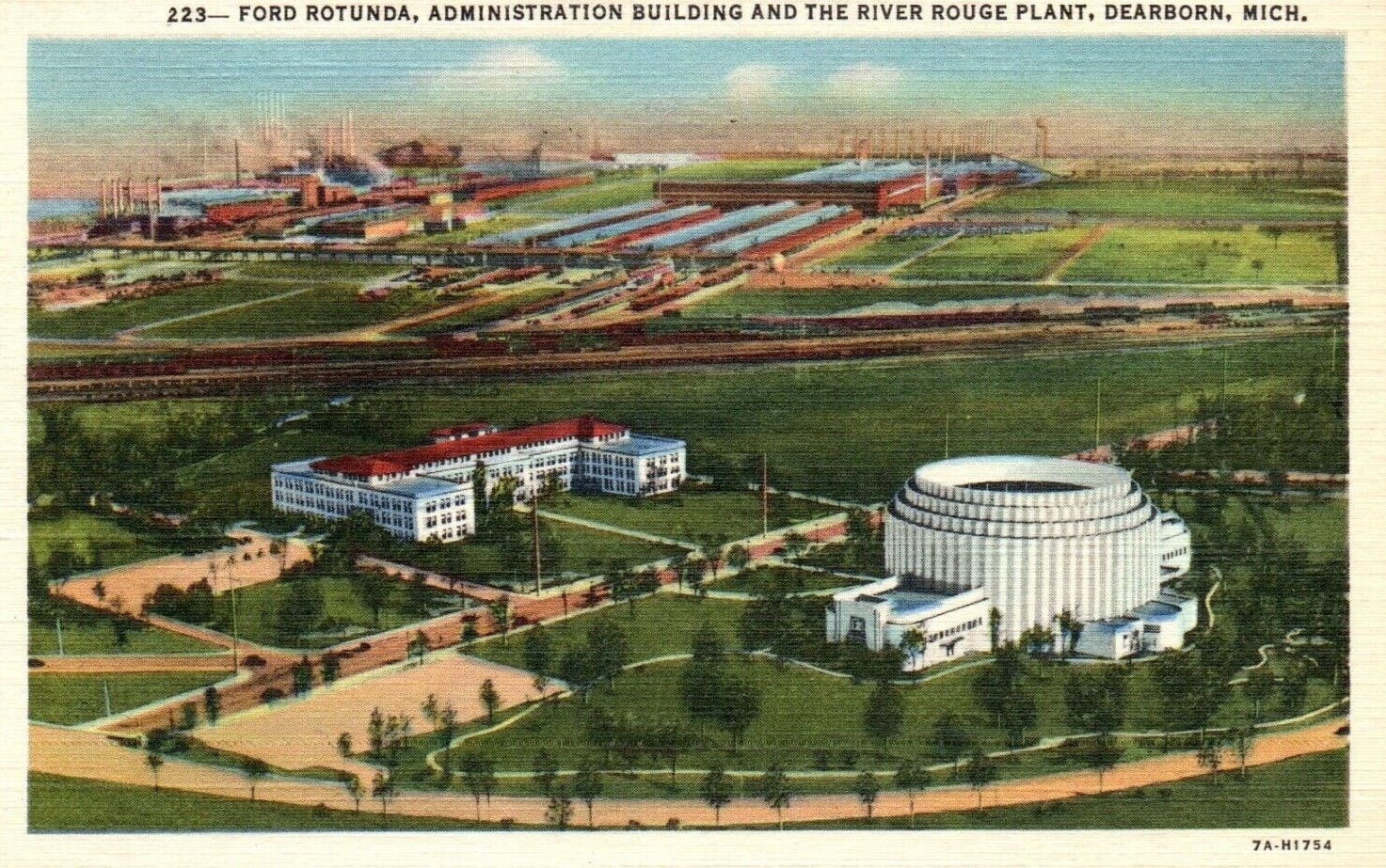

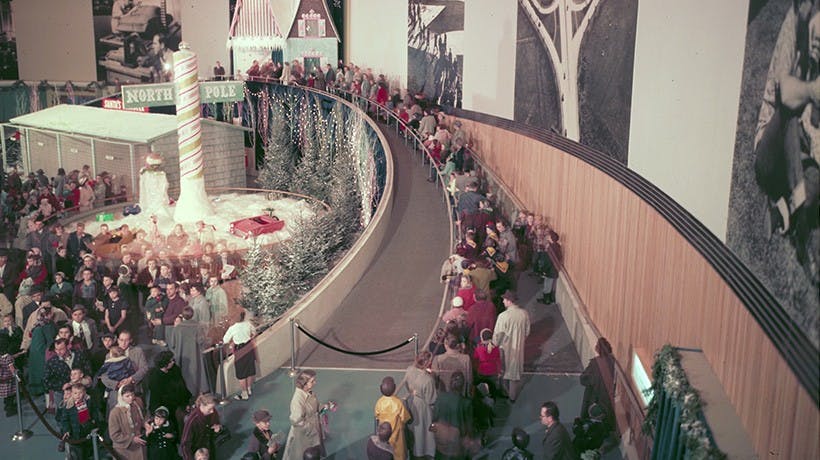

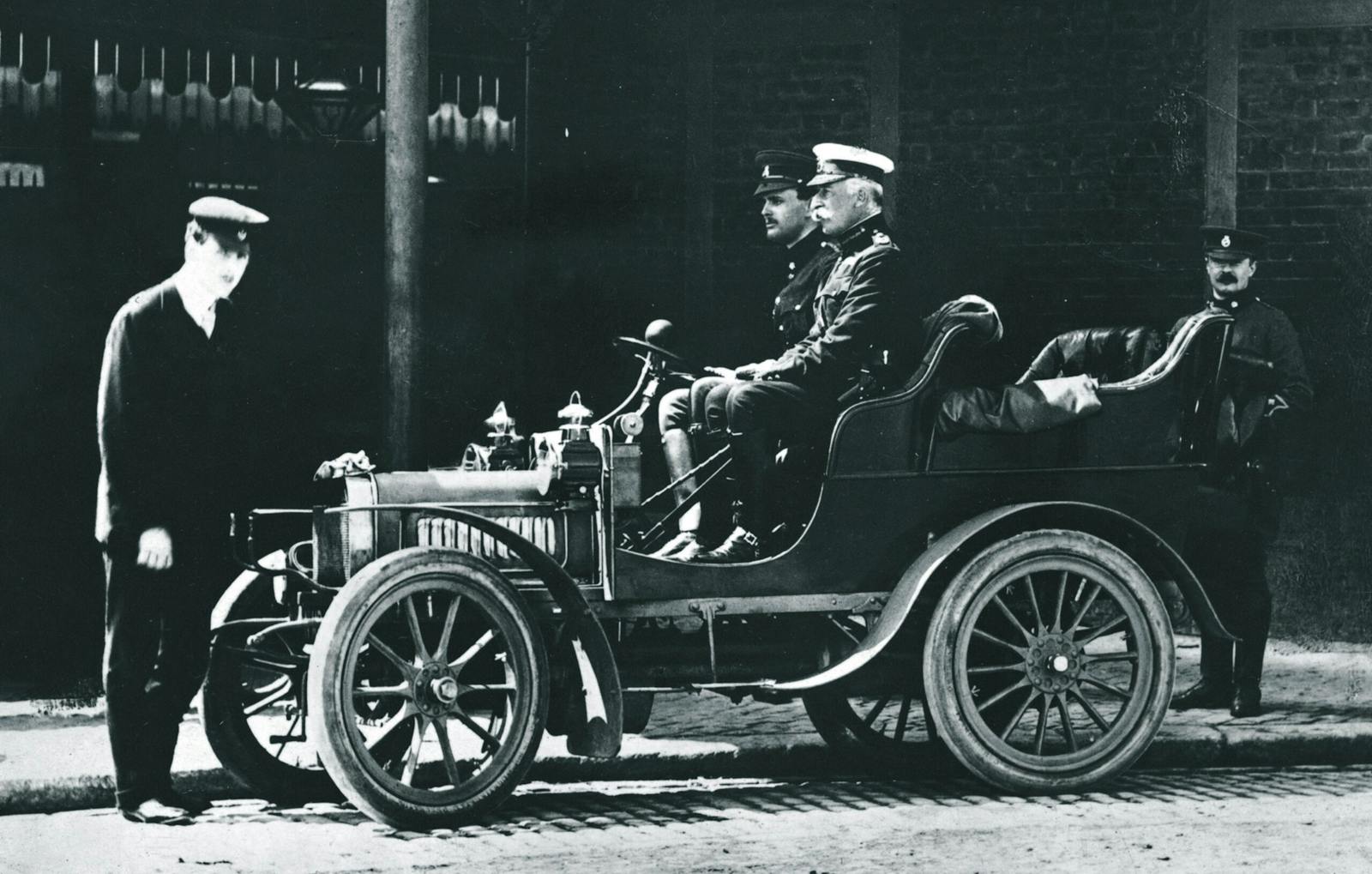
I was 9 years old when Rotunda burned. My father was a 37 year veteran of GM Hydramatic division so the only reason to go to Rotunda was for the Christmas display. We lived only 4 miles from Rotunda making it easy to go. I remember vividly standing in the long line to go see Santa. And the absolute wonderment of the animatronic toy displays. When my dad told me the place burned down I cried. And never realizing I would not see something like that ever again. So happy for this story. I tell my wife, of 40 years, of how cool this was. She now can finally see what i was talking about. Her comment “how lucky you were as a child” growing up in Detroit. Yes I was!!
Thank you, Paul! What great memories. Wish I’d seen it too.
Very interesting building. Detroit once had a lot of iconic buildings related to automotive companies.
We have a smaller version in San Diegos Balboa Park, the Ford V8 building from the 1935 Californian Pan American Expo https://en.wikipedia.org/wiki/Ford_Building_(San_Diego)
I was scrolling the comments to note the same thing….
Growing up in the 50’s, I went with my family to the Rotunda every year at Christmas time. My favorite display was the miniature circus that was set up every year. I remember it as being incredibly detailed with moving figures and attractions such as swinging trapeze artists, dancing bears etc. If I remember correctly the display was scheduled to be delivered and set up just days after the day the Rotunda burned, so was not lost in the fire. I wonder if it still exists somewhere. I hope so, as it was truly a work of art!
That’s a great question. Maybe someone at Ford could answer that question?
I grew up in NE Indiana. School trips are remembered. Dodge right after WWII and Ford in 1949 while attending a HS convention. The school principal took delivery of a new DodgeI sedan when we toured the plant in about 1947. I sometimes attended the county fair in Centerville, MI. Henry Ford enjoyed rural America. While I was at the fair he was requested to rise in the fair grandstand. A few years later Michigan governor G. Mennen “Soapy” Williams was present and he was asked to stand. As I recall, his limousine was a Packard. Revisiting the FORD Museum over the years has given me great enjoyment It and Greenfield Village are national treasures.
I’m told that the Ford Early V8 foudation has built a quarter scale Rotunda in Auburn. I haven’t been there yet, but others told me it is magnificent.
Actually never heard of it. My first trip to the Ford plant and Geenfield Village was in 1970.
I remember going thru the assembly plant seeing the first Mustangs being built and toward the end of the tour getting a layered paint chip of all the colors they used.
My Grandmother used to take me there as a kid. It was a great place to start the Christmas Season. Something that even kids today would enjoy !
Great article, thanks. I grew up in W. Michigan and never had heard of the Ford Rotunda until today; it was destroyed when I was only 6 years old, I guess is why. Wonderful to see the pictures.
Thank you!
If you’re a certain age you remember the Rotunda for the Christmas display, unforgettable for a child and you remember when it burned to the ground.
The sign in front of the building has been restored and is in front of the Early Ford Museum in Auburn Indiana.
They SHOULD rebuild it. It makes more sense than when the built the RenCen (now home to GM) and the restoration of the abandoned Detroit Train Station which will become FoMoCo offices and hotel rooms
Sad but not as sad as the Pinto fires a decade later.
Imagine building something like that (for the general public) today. All the while building affordable cars by the millions. Fast forward to today: We plan on building 5,000 units. “We can put you on the list but its a 9 month wait, and we wont tell you until it arrives (if at all) about the $10,000 ADM fee”. “Unless you have a 6 figure income, please don’t come back. Oh, and it helps if you only order a truck” “We’ve discontinued everything else”.